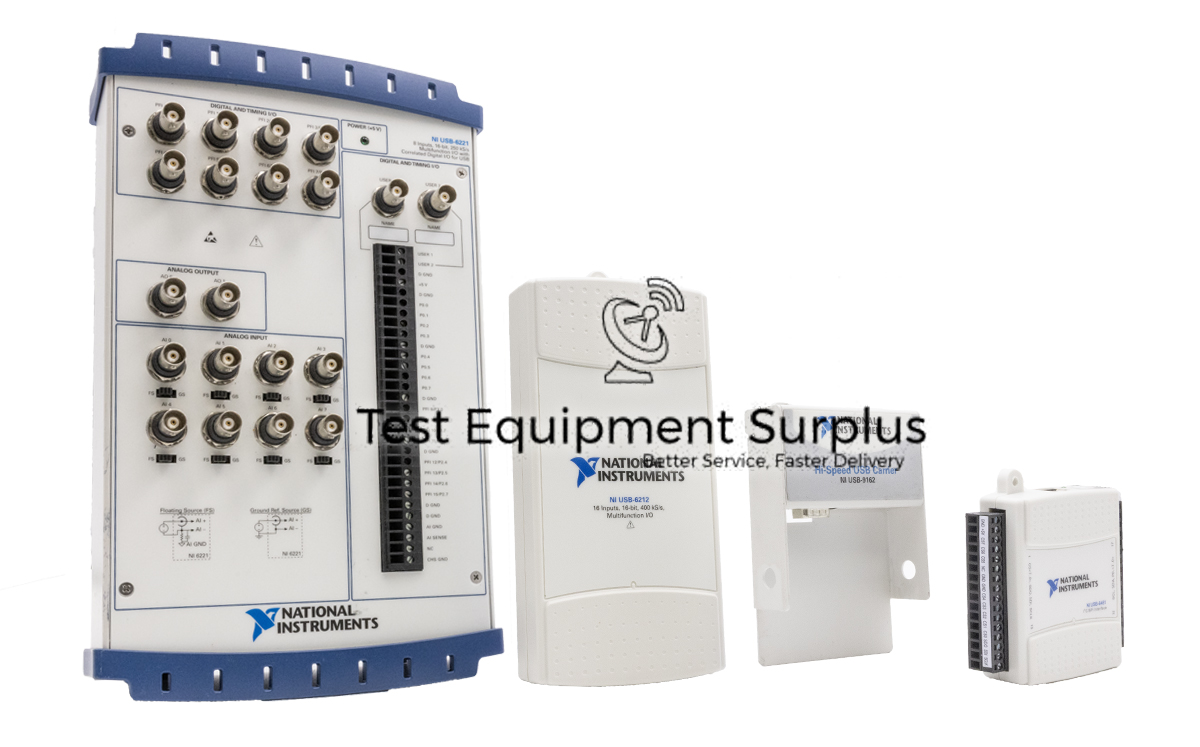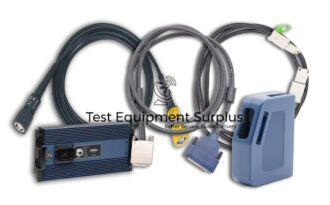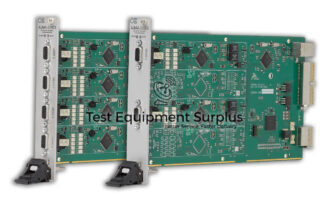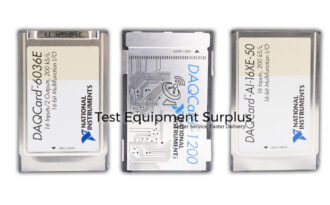Description
The National Instruments USB-5681 RF Power Sensor Device, with part number 781214-01, is a versatile tool from the renowned manufacturer National Instruments.
Designed to cover an extensive frequency range from 10 MHz to 18 GHz, it caters to a broad spectrum of RF applications. The device can accurately measure input signal strengths between -40 dBm and +20 dBm, with specialized measurement sub-ranges for enhanced precision, including +20 dBm to -7 dBm, and -7 dBm to -40 dBm.
It supports a bandwidth of 50 kHz, which facilitates its use in various scenarios, and boasts a measurement speed of 100 samples per second (S/s), enabling quick data acquisition. The uncertainty in linearity is impressively less than 3%, signifying high reliability in its measurements.
Adherence to safety standards such as IEC 61010-1, EN 61010-1, UL 61010-1, and CSA C22.2 No. 61010-1 ensures that it meets global regulatory requirements. The device operates efficiently with a power requirement of 5 VDC and 450 mA, sourced directly from the host USB connection.
To protect the equipment, the USB-5681 is designed to withstand a maximum voltage of ±20 VDC at the RF port and can handle an absolute maximum power of +30 dBm. Moreover, it offers flexibility in operation with two modes: hardware-triggered and software-triggered modes, allowing for tailored usage in different measurement environments.
| Specification | Detail |
|---|---|
| Product Name | National Instruments USB-5681 RF Power Sensor Device |
| Part Number | 781214-01 |
| Manufacturer | National Instruments |
| Frequency Range | 10 MHz to 18 GHz |
| Input Signal Range | -40 dBm to +20 dBm |
| Measurement Sub-Ranges | +20 dBm to -7 dBm, and -7 dBm to -40 dBm |
| Bandwidth Support | 50 kHz |
| Measurement Speed | 100 Samples/s (S/s) |
| Uncertainty in Linearity | <3% |
| Safety Standards | IEC 61010-1, EN 61010-1, UL 61010-1, CSA C22.2 No. 61010-1 |
| Power Requirements | 5 VDC, 450 mA (from host USB) |
| Maximum Voltage at RF Port | ±20 VDC |
| Absolute Maximum Power | +30 dBm |
| Operating Modes | Hardware-triggered mode and Software-triggered mode |
Question 1: What are the measurement range and frequency coverage specifications of the National Instruments USB-5681 RF Power Sensor Device, part number 781214-01?
Answer 1: The two specialized measurement sub-ranges of the National Instruments USB-5681 RF Power Sensor Device designed to enhance precision in signal strength measurement are +20 dBm to -7 dBm, and -7 dBm to -40 dBm.
Question 2: What are the two specialized measurement sub-ranges of the National Instruments USB-5681 RF Power Sensor Device designed to enhance precision in signal strength measurement?
Answer 2: The National Instruments USB-5681 RF Power Sensor Device can accurately measure input signal strengths between -40 dBm and +20 dBm, with specialized measurement sub-ranges of +20 dBm to -7 dBm, and -7 dBm to -40 dBm.
Question 3: What is the range of input signal strengths that the National Instruments USB-5681 RF Power Sensor Device can accurately measure, and what are the specialized measurement sub-ranges included for enhanced precision?
Answer 3: The National Instruments USB-5681 RF Power Sensor Device, part number 781214-01, has a measurement range of -40 dBm to +20 dBm with frequency coverage from 10 MHz to 18 GHz.
Question 4: What are the input signal strength ranges that the National Instruments USB-5681 RF Power Sensor Device can accurately measure?
Answer 4: The National Instruments USB-5681 RF Power Sensor Device can accurately measure input signal strengths between -40 dBm and +20 dBm, with specialized measurement sub-ranges for enhanced precision that include +20 dBm to -7 dBm, and -7 dBm to -40 dBm.
Question 5: What range of input signal strengths can the National Instruments USB-5681 RF Power Sensor Device measure, and what are the specialized measurement sub-ranges provided for enhanced precision?
Answer 5: The National Instruments USB-5681 RF Power Sensor Device can measure input signal strengths between -40 dBm and +20 dBm, with specialized measurement sub-ranges of +20 dBm to -7 dBm, and -7 dBm to -40 dBm for enhanced precision.





